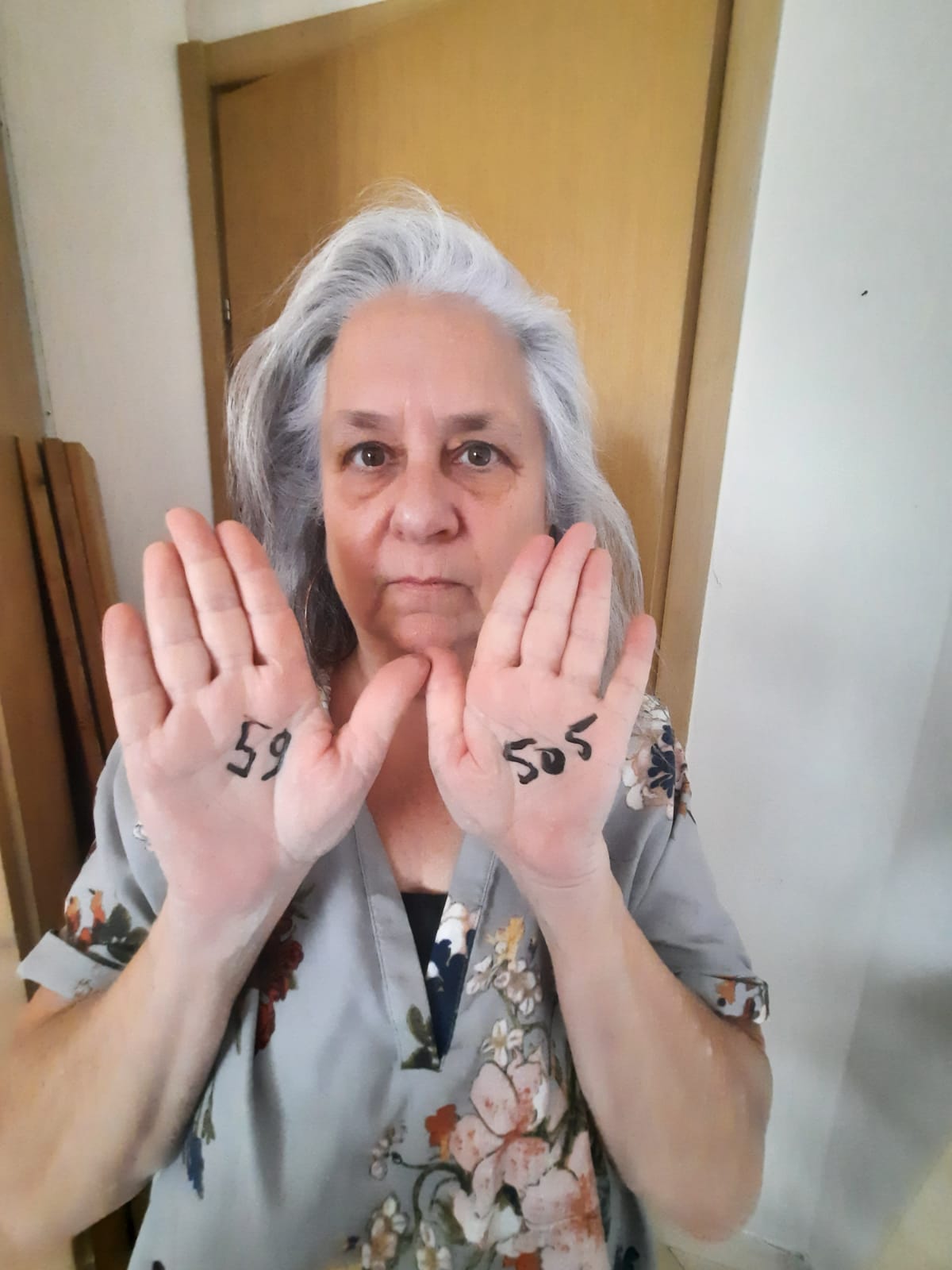Smotrich: The pretty face of barbarity
Bezalel Smotrich looks like such a nice guy. Almost normal. And then he opens his mouth.... This week, Israel's Finance Minister showed the real ugliness behind that cute smile.
Following Finance Minister Bezalel Smotrich this week reminded me a bit of the Disney film Lilo and Stitch.
Wait, what?
Bare with me. It will take me a minute to explain.
(TL;DR: He has such a cute baby face. And is so unbearably awful and espouses such mind-boggling violence. That’s all. It can feel confusing. Don’t fall for it. And also, END THE WAR NOW)
As I saw Smotrich stand on his platform and basically condemn the hostages to die and declare that Gaza war will go on indefinitely or until Palestinians are gone and the Strip is settled with Jews only because, you know, in his mind or his bubble that’s what “everyone” wants — seeing him do this kind of reminded me of how easy it can be for people to nod along with someone who has a pretty face and good hair, even when they say awful things.
I’m sure this dynamic has been part of human history for a while. But I often blame Disney. After all, I think it was the Disney cartoon culture that effectively taught all of us — I mean, really all of us because is there anywhere on this planet that hasn’t been disneyfied? — Disney taught us that pretty people are good and ugly people are bad. In a nutshell. Amiright?
So this was one of the big criticisms of Lilo and Stitch, which is why when I encounter this paradigm in real life, my brain goes there. I actually love Lilo and Stitch the movie, despite its flaws. (Like my heroine Roxane Gay, I am a “bad feminist”, though I am wont to call myself “bad” because of its many painful associations. Nevertheless this is definitely one of those stances that she would probably identify as a “bad feminist” kind of moment, as she recently explained to Stephen Colbert.) So I love the movie, and I especially love Hawaii and Hawaiian culture, and the soundtrack of the film is soul-shakingly beautiful. But they do this thing in the movie in which all the hula dancers are cookie-cutter Barbie-dolls in brown. Meaning, young, female, long-haired, dark-skinned, unrealistically thin, and looking exactly alike. In actual Hawaiian culture, hula dancers come in all shapes and sizes, and that is absolutely one of the most breathtaking aspects of the culture that the entire human race should be studying and learning from. When this critique of Lilo and Stitch came out, I was smack in the middle of my doctoral thesis studying gender, culture, and education, and I was intrigued by the issue. It was a huge “aha” moment for me to realize how much we have been trained to conflate beauty and righteousness, to think that the most physically attractive person is likely to be the most good one. Sure, there are exceptions (Quasimoto, you know). Precisely. Exceptions that prove the rule.
I think about that often in many different contexts. The idea emerged in a slightly different iteration in my research on sexual abuse in the Jewish community. One of the most indelible findings was that sexual abusers are often so charming.
“Charming” is not exactly the same as “pretty” but it has a similar effect. The charming abuser will often have a nice smile, an engaging sense of humor, an easy flirtatiousness, good hair…. They often look like a really nice guy. Which means, you know, they are often sort of “pretty”, at least by certain standards. If they are not traditionally “pretty”, abusers may act like they are, using the smile and the twinkle in the eye to convey their implicit belief in their own beautifulness. If people believe that about themselves — that they are easy to absolutely love — it can be easy for others to fall into the trap of nodding along with all that. And also, because of this — because abusers are so loved and so charming and people think they are just SO GREAT because, you know, LOOK AT THEM wink wink — often victims have a very hard time convincing the rest of the world that what happened happened, that the guy is not in fact a good guy. But look at him. Isn’t he so great?!
*****
Actually, I’ve been noticing this for a while. The topic of how charm and prettiness can mask awful things also came up in my doctoral research. I hadn’t thought about this for a few years, but I found myself revisiting it during my recent podcast episode with Nirit Oren Shternberg. Nirit, a brilliant and inspiring lifelong peace activist whom I have come to adore, was telling a story about her work in conflict resolution with “settler women”. She recalled how a woman in her dialogue group said — in a very sweet, delicate voice — how randomly killing Palestinians is okay. (If you want to see a similar clip of exactly this — of a lovely-looking young settler woman telling a reporter that she believes it is entirely fine to randomly kill Palestinians, see the episode of John Oliver’s Last Week Tonight on the topic of the West Bank. pasted below. The clip starts at minute 17:35, though I recommend watching the whole thing.)
When Nirit told me this story, I recalled how in my doctoral research, I was studying the identities of religious girls, and was also taken by the ways in which harsh messages would come in attractive “packaging”, if you will. Back then, I was studying gendered cultural messages in religious education, and often came upon messaging of female servitude, excess body cover, sexual objectification. And I found that often the most oppressive messages were transmitted by lovely young women with sweet voices and colorful scarves who giggled and sat cross legged on the desk and brought baked goods and seemed like amazing buddies to the teenage girls. It was easy for the girls to believe that this woman in front of the class has your best interest at heart. Look how cute she is!!!
Anyway, I wrote about this in my dissertation. The chapter is called, “Indoctrination with a Pretty Face.”
Nirit and I chatted about this for a bit. Nirit and I talked a bit about why it feels so jarring when someone who seems so “nice” says things are actually awful. We didn’t blame Disney, so maybe I’m wrong that they are THE cause. Maybe they are just ONE cause. Or maybe Disney is just a symptom of something bigger. You can listen here or watch here. (The bit about Indoctrination with a Pretty Face starts at minute 24).
****
There was another moment in my life, now that I’m thinking about it, where I found myself startled to see someone so seemingly “nice” say awful things. It was during my post-doctoral research on Orthodox Jewish men. This was the research in which I interviewed 56 men who are Orthodox and pray in “partnership minyanim”, men who straddle the patriarchal culture while joining kind-of feminist spaces — the research that became my first book, The Men’s Section. During this research project, I had anticipated meeting men living with complexity of wanting to be part of their traditional world but also embrace feminist ideas, and was eager to hear how they navigated that. That did happen to a degree and I had some wonderful interviews with men whom I’ve come to I admire. But….. not just. I also encountered men who vehemently advocated for some very old-school patriarchy without any complexity or self-awareness at all. There, too, I found myself taken aback while speaking to young, “sweet”, charming, educated, gentle-demeanored men who looked like such nice guys while discovering that they had some terrible ideas about women and how emphatically they believed that women need to be controlled because we are less competent, less knowing, less deserving. Some of those interviews left me shuddering. It was so hard to believe that a 30-something “nice guy” with the clean-cut look and sparkling blue eyes and gentle smile who I would have definitely invited over for a Shabbat meal could say such hurtful things to my face. It was all so confusing. And really, really, hard to wrap my head around. In my writing, I put those bits aside so I could focus on the rest of what I found. I put those experiences into one pile and then in my last chapter, collated them into a final section which I called, “The New Patriarchy”, but I could have called it, “Patriarchy with a Pretty Face.” It felt like the same thing I uncovered in my doctoral research.
****
Whew, okay, that was a long introduction. Just recalling all these different moments in my research and my life gives me chills. I’ve never put all these experiences together this way. I think I’m detecting a theme in my life. I hadn’t even realized that this was a recurring idea in my research until right now, writing this substack. Am I obsessed? I don’t know. Why do I keep “discovering” that pretty people can be the worst? Am I even allowed to say that? How deeply do my own expectations and socializations go? How intensely have I been hanging on to the idea that people who look “nice” and seem “nice” should actually be “nice”? Why didn’t I understand earlier that this just isn’t true? I just keep bumping into this “surprise” that charming people can be terrible. I keep finding myself shocked time and again at how someone who looks so normal in their appearance, who seems so nice in their demeanor, who smiles so sweetly in a way that you want to connect with them and feel safe with them — how often in life that person is ready to take you down a very dark path and maybe even really, really hurt you. Or hurt someone else. I keep being taken aback by this. Am I shocked because of my Disney training to think that ATTRACTIVE=GOOD? Or is it something else? Is it because I so badly want to trust people to be who they seem to be? Am I constantly being crushed by our surroundings of emotional manipulation and lies because of something in my own life? Am I perhaps extra affected today as our surroundings seem to have gotten so much worse in this trump world? Should I be having this conversation in therapy instead of in my writing? Aaargh, I don’t know. Anyway, f you have thoughts and insights about this, please share.
****
Anyway, getting back to my researcher self (shaking it all off like a dog getting out of the water), my POINT TODAY is that Bezalel Smotrich makes me think about all these things. He has this baby face and nice-guy demeanor. It’s easy to see why people think of him as the guy they want to be their representative. They LOVE that this guy is LITERALLY the FACE of the new Religious Zionism.
He’s so easy to want to love.
You know, until he opens his mouth.
******
So here are a few recent snippets of the Smotrich Chronicles.
Leaving the hostages to die. At the annual Ynet conference this week, Smotrich basically said that there is no plan to save the hostages. He called the idea of saving the hostages just a “slogan” that nobody in his orbit is interested in. This obviously infuriated the hostage families — and those of us who care about them — but Smotrich doesn’t care. It’s not the first time he has easily dismissed the hostages. He’s been doing it for while.
Jewish settlement of Gaza. Smotrich has been saying this out loud for quite some time. He fully intends to force Palestinians out of Gaza and to replace them with Jewish settlement. And he has said many times — on camera, in public — that budgets “will not be a problem”. Ethnic cleansing anyone?
Fancy jeep Rangers for Jewish “farms” take over in the West Bank. Smotrich, along with Orit Strock, distributed 25 expensive cars to people (who? not clear) who are responsible for twenty-five farms in southern Hebron of 5-10,000 dunam each. These are some of the same hills where Palestinians have been violently displaced, such as Masafer Yata that was documented in the Oscar-winning film No Other Land. Smotrich with his cute smile and fancy cars is the face of systematic, violent, ethnic displacement of Palestinians from their homes.
There are a zillion other examples of Smotrich saying horrible things and advocating, effectively, for ethnic cleansing of Palestinians. Just google it….
****
I feel like, Passover is in a few days and I should be writing something about that. I should be writing something cheery and sweet about that. Like “Happy holidays everyone!!” But how can I? How can we? Happy what? How can we, the Jewish people, go on with business as usual while all this is going on? While Jewish identity and culture have been coopted by people like Smotrich to do the most awful things in the world?
While we’re getting ready for our holiday, there is so much suffering being carried out in our name, in the name of the Jewish people…..
If we are going to be sitting down to talk about freeing slaves from injustices of oppression, we need to be honest about the oppressions happening today. For example, over the last 20 days, the IDF has killed 505 Palestinian children in Gaza. In our name. In my name. 505 children! This has to stop!
We need to take a good look in the mirror and ask ourselves whether this story about how we were once slaves is even relevant. Because maybe in today’s world, we are not the slaves. Maybe in today’s reality, we are more like Pharaoh. Maybe WE are the ones whose hearts have been hardened to the suffering of others…..
****
These are my holiday wishes:
End the war now!
Bring back the hostages, all at once, in a negotiated deal, whatever it takes!
End the occupation!
Elections now!
Bibi Netanyahu to prison where he belongs!
New leadership on all sides that have a vision for humanity, shared society, justice, equal rights, and freedom for all.
That’s where I am. What about you?
####
Keep reading with a 7-day free trial
Subscribe to The Roar to keep reading this post and get 7 days of free access to the full post archives.









